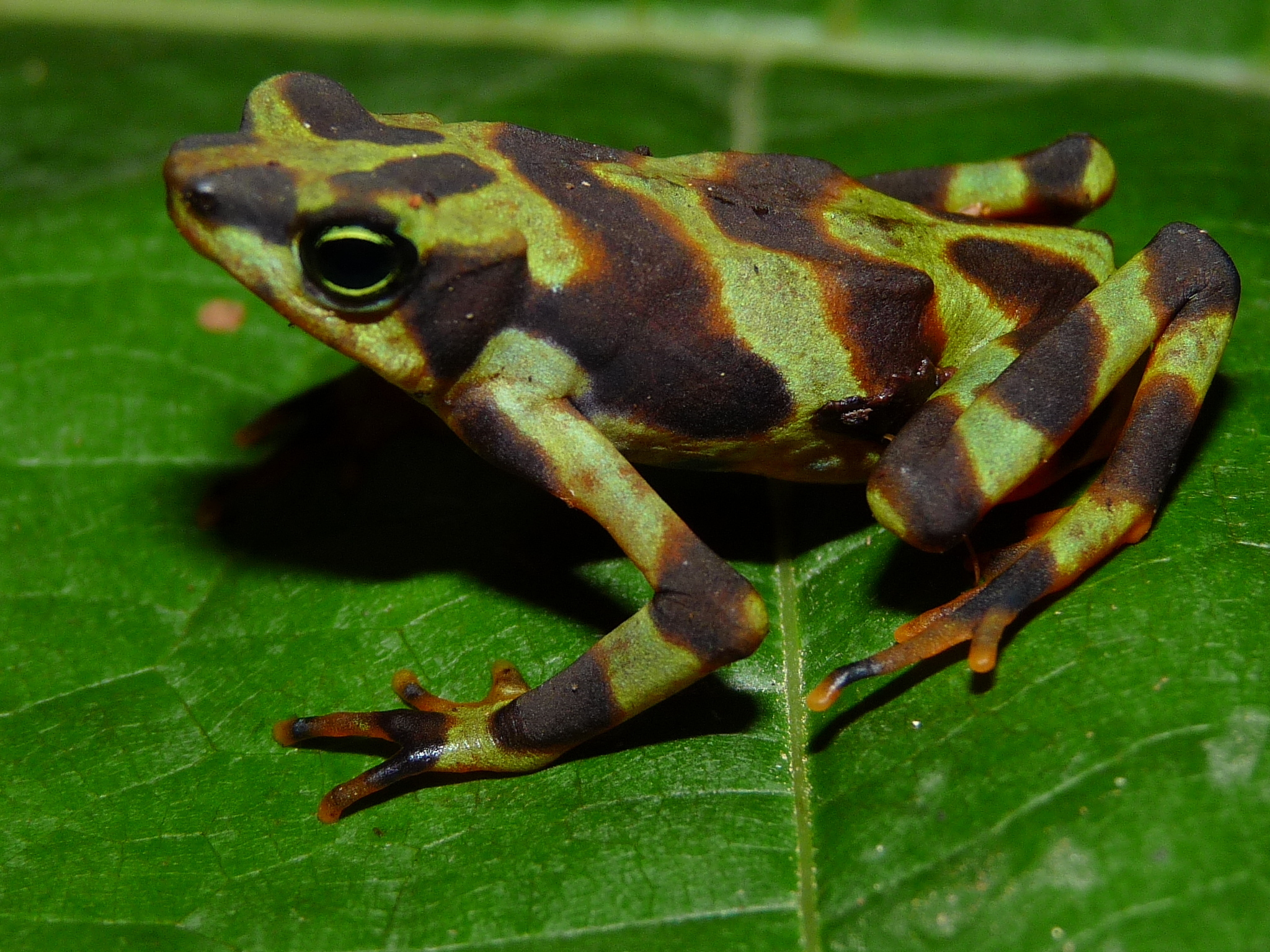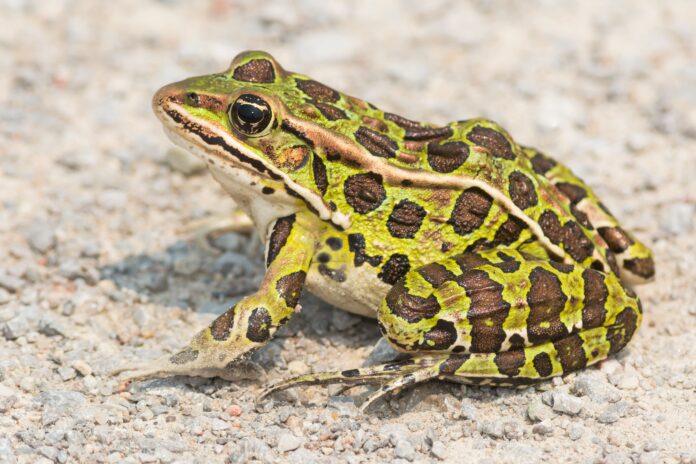Last Updated on July 18, 2021 by Fumipets
Frogs may be found in almost every part of the world. On the outside, everyone is aware of their appearance. The typical human, on the other hand, has no idea what a frog’s insides look like. In addition, the typical individual has no idea whether they have a backbone, a skull, muscles, and so on.
In this article, We’ll cover all you need to know about frogs.
So, Are Frogs Vertebrates or Invertebrates?
Frogs are vertebrates. In other words, they, like other vertebrates, have a backbone and a sophisticated skeletal system.
Frogs are considered amphibians in the animal world. All amphibians are vertebrates, which means they have an entire skeleton. All amphibians are defined by their vertebrate status and the presence of a complete skeletal system.
A flat head, a backbone with nine vertebrae, and many additional bones make up the frog’s complete skeletal system.

Why do frogs have a complete skeleton?
A complete skeletal system is found in all vertebrates, including frogs and humans. There is a vertebral column or backbone in every vertebrate skeletal system. Frogs, like all other vertebrates, have a backbone in their skeleton. In all vertebrate skeletal systems, the backbone is the primary bone.
It’s worth noting that the backbone isn’t made up of just one bone. It is a set of bones that runs from the top of the skull to the bottom of the vertebrates’ bodies. Vertebrae are the bones (singular: vertebra).
In all vertebrates, including frogs, the backbone’s primary function is to support the animal’s body weight. To put it another way, the backbones of all vertebrates sustain their bodies’ weight.
The backbone also supports the additional bones in vertebrates that support limbs, allow for complicated motions, and protect vital bodily organs. As a result, all vertebrates benefit greatly from having a strong backbone.
The backbone’s second function is to safeguard the spinal cord, which passes through it. The spinal cord is a bundle of nerve fibres that originate in the brain and travel down the backbone of every animal. Every vertebrate’s brain can only communicate with and control the rest of the body via this mechanism. As a result, it is very valuable, and this is why it must be safeguarded.
As a result, the answer to the question “Why Do Frogs Have a Full Skeletal Structure?” is because they need it to support their body weight, move freely, and protect their spinal cord.
Does the backbone of a frog help them move better?
Absolutely! Frogs’ movements are made easier by their backbone. Because it is the primary component of the frog skeletal system on which the limbs (arms and legs) of frogs are attached, it is very essential for mobility. Frogs are unable to move if they do not have it. The backbone of frogs is also linked to their heads. They can’t move their heads without it, therefore it’s a must.
The backbone of vertebrates is not made up of a single bone, as mentioned before. It’s made up of a series of bones called vertebrae (plural: vertebrae) that are held together by elastic ligaments. Frogs can leap, twist, and execute other complicated motions because their backbone is made up of a network of bones connected by elastic ligaments.
Because it is short and links to a comparatively huge hipbone to support their large leg muscles, the frog backbone also improves their mobility. When they’re on land, this is what allows them to leap long and high.
As a result, the frog backbone is critical for mobility and allows frogs to leap like frogs.
Do Frog Tadpoles Have a Backbone?
No, they don’t have any. Frog tadpoles have no backbone or skeletal system and are very small. They don’t even have a bone. They don’t require one, however, since they don’t have a bodyweight to support and can swim using their long tails.
They do, however, possess a cartilage-based soft skeleton. It’s not particularly helpful to them while they’re young tadpoles, but it’s what transforms into a skeletal structure when they grow into adults.
Do Frogs and Other Vertebrates Have Any Similarities?
They do exist. Frogs and other animals, such as humans, have distinct characteristics. They are many and do not need further explanation. Many individuals, though, aren’t aware of the parallels. They aren’t external, therefore this is why.
In many respects, frogs resemble other vertebrates. The fact that frogs and vertebrates both have a skeletal structure is the most striking resemblance between the two. Although the skeletal system differs in form, shape, and size across the many known vertebrate species, it is the same thing and has the same purpose: to support the animal’s body weight.
Frogs and other vertebrates share bodily systems that function similarly to humans and other vertebrates. The circulatory, respiratory, and excretory systems of frogs and other vertebrates are all similar.
Similarly to humans and other animals, frogs have a nervous system. A tiny brain and a spinal cord with nerve fibres make up the neurological system of the frog. It’s akin to what sophisticated animals like humans have.

What Vertebrate Class Do Frogs Belong To?
Amphibians are frogs. To put it another way, they are vertebrates from the amphibian family. The majority of frog species, like most other amphibian species such as newts and salamanders, live both on land and in water. Some species, on the other hand, spend all of their time on land, while others solely dwell in water.
Frequently Asked Questions (FAQs)
Which frog species is the smallest?
On an island in the Gulf of Carpentaria, the world’s tiniest frog species was found just lately. P. amanuensis is the name given to this small frog. It’s just 7.7mm in length and width. As a result, it’s just around a centimetre long. Yes, it does have a complete skeletal system, in case you were wondering.
The frog holds the distinction of being the smallest vertebrate known to man, while having a short lifetime (less than 12 months). As a result, it is both the tiniest frog and the tiniest vertebrate that man has ever seen.
Which is the world’s largest vertebrate?
The blue whale is the biggest vertebrate yet discovered. It is larger than the smallest vertebrate (a tiny frog measuring less than 1cm in length) and weighs more than 400 kg. To put it another way, it’s huge.
:max_bytes(150000):strip_icc()/GettyImages-588368234-6ca559948184459786f1a669356e1c22.jpg)
What Is the Total Number of Vertebrate Species?
Thousands of different vertebrate species exist. In reality, it’s close to 70,000. Classes are used to categorise the species. Amphibians, mammals, reptiles, fish, and birds are some of the most frequent classifications.
Although there are numerous vertebrates, they only account for approximately 3% of all creatures on the planet. Invertebrates, or creatures without a skeletal structure or backbone, account for about 97 percent of the world’s species.
What’s the Difference Between Frogs and Toads?
Toads and frogs are the same species, therefore there is no major difference between them. Frogs, on the other hand, have dry, rough skin and are often larger and less nimble than frogs in terms of jumping high and far.
To avoid toads, it is necessary to understand the differences between frogs and toads. Many toads are toxic, therefore this is the case. Like other amphibians, such as salamanders, they produce poison in their skin. So it should be your goal to learn about them and avoid them.
A toad may be kept as a pet, but you need first to understand how to manage them before bringing one into your house.
Is it Possible for Frogs to Breathe in Water?
They certainly have the ability. Frogs’ skins allow them to breathe underwater. It’s a unique adaption that allows them to hunt for food or hide from predators above water while underwater. If the circumstances are perfect, frogs can remain submerged forever.

Conclusion
Vertebrates include frogs. They are part of the amphibian family of animals. Frogs, like other vertebrates, have a complete skeletal system with a backbone to support their weight and assist mobility.


















